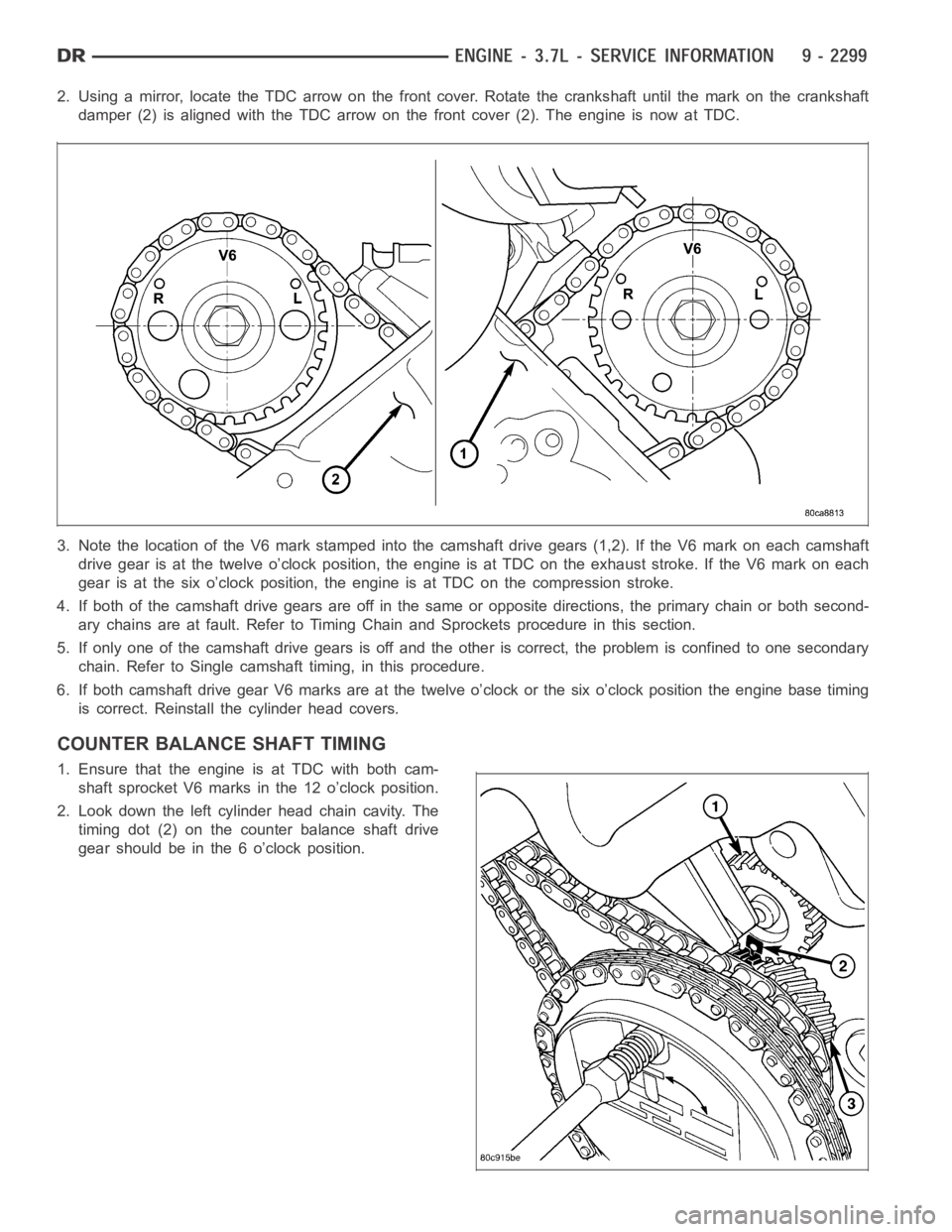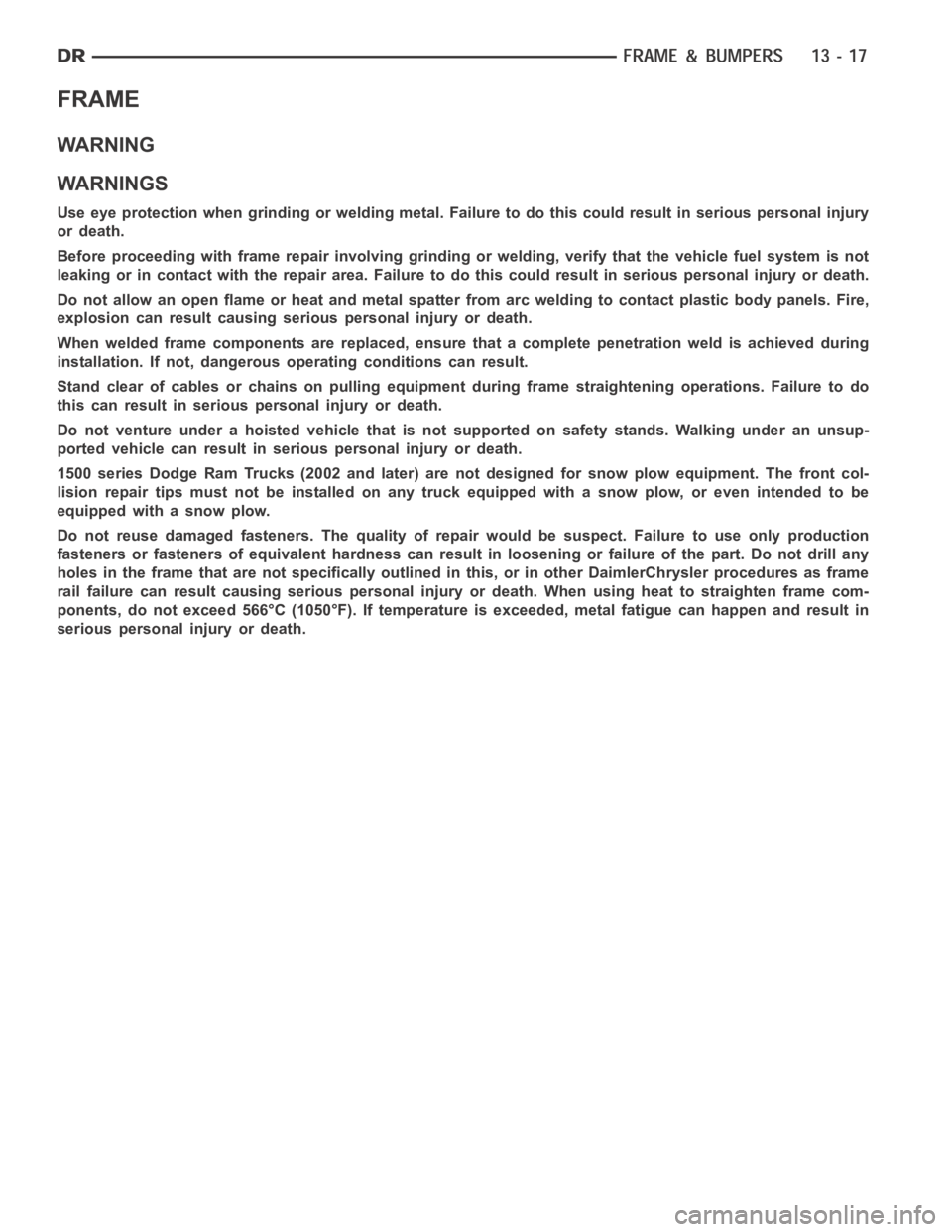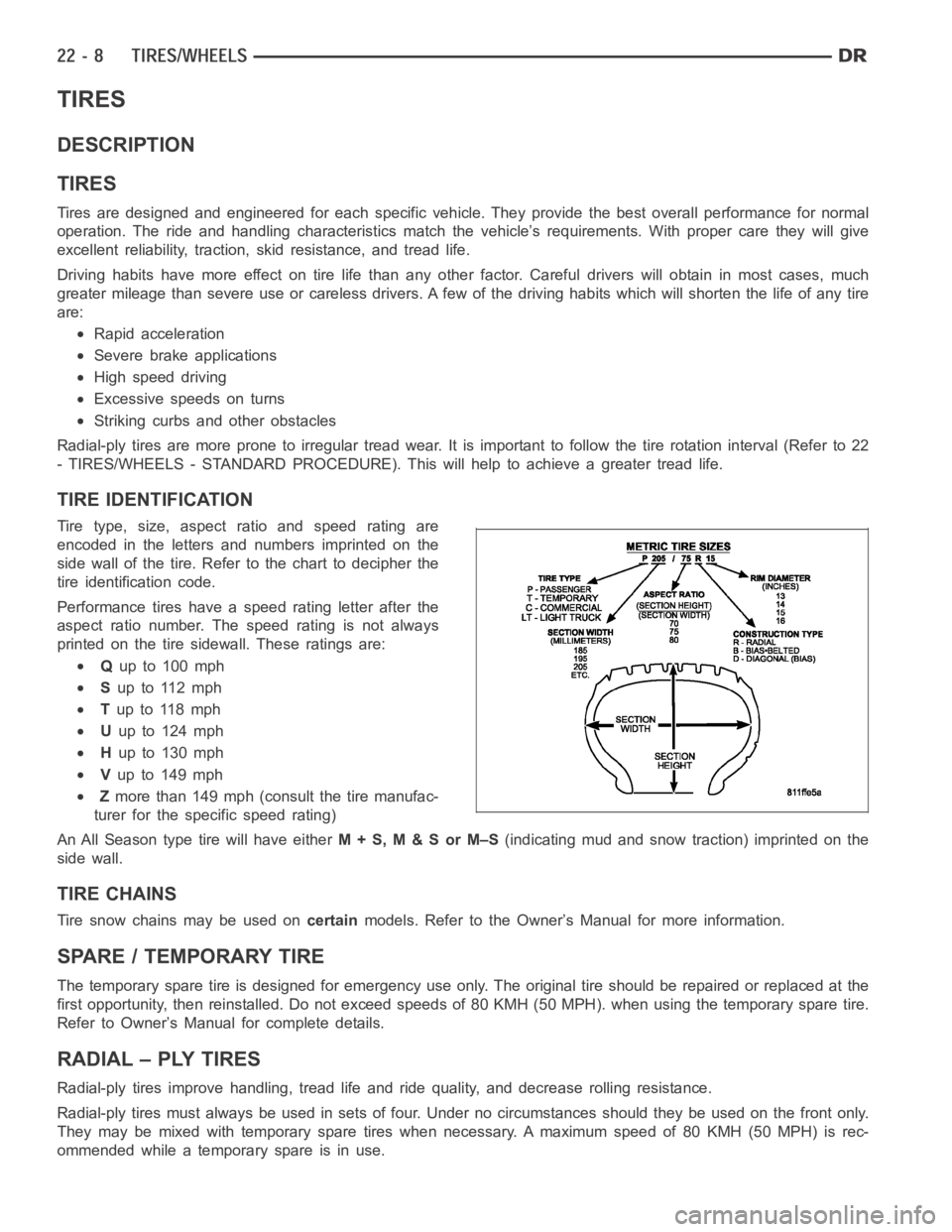Page 1608 of 5267

2. Using a mirror, locate the TDC arrow on the front cover. Rotate the crankshaft until the mark on the crankshaft
damper (2) is aligned with the TDC arrow on the front cover (2). The engine isnow at TDC.
3. Note the location of the V6 mark stamped into the camshaft drive gears (1,2). If the V6 mark on each camshaft
drive gear is at the twelve o’clock position, the engine is at TDC on the exhaust stroke. If the V6 mark on each
gear is at the six o’clock position, the engine is at TDC on the compression stroke.
4. If both of the camshaft drive gears are off in the same or opposite directions, the primary chain or both second-
ary chains are at fault. Refer to Timing Chain and Sprockets procedure in this section.
5. If only one of the camshaft drive gears is off and the other is correct, theproblem is confined to one secondary
chain. Refer to Single camshaft timing, in this procedure.
6. If both camshaft drive gear V6 marks are at the twelve o’clock or the six o’clock position the engine base timing
is correct. Reinstall the cylinder head covers.
COUNTER BALANCE SHAFT TIMING
1. Ensure that the engine is at TDC with both cam-
shaft sprocket V6 marks in the 12 o’clock position.
2. Look down the left cylinder head chain cavity. The
timing dot (2) on the counter balance shaft drive
gear should be in the 6 o’clock position.
Page 2190 of 5267

FRAME
WARNING
WARNINGS
Use eye protection when grinding or welding metal. Failure to do this couldresult in serious personal injury
or death.
Before proceeding with frame repair involving grinding or welding, verify that the vehicle fuel system is not
leaking or in contact with the repair area. Failure to do this could result in serious personal injury or death.
Do not allow an open flame or heat and metal spatter from arc welding to contact plastic body panels. Fire,
explosion can result causing serious personal injury or death.
When welded frame components are replaced, ensure that a complete penetration weld is achieved during
installation. If not, dangerous operating conditions can result.
Stand clear of cables or chains on pulling equipment during frame straightening operations. Failure to do
this can result in serious personal injury or death.
Do not venture under a hoisted vehicle that is not supported on safety stands. Walking under an unsup-
ported vehicle can result in serious personal injury or death.
1500 series Dodge Ram Trucks (2002 and later) are not designed for snow plowequipment. The front col-
lision repair tips must not be installed on any truck equipped with a snow plow, or even intended to be
equipped with a snow plow.
Do not reuse damaged fasteners. The quality of repair would be suspect. Failure to use only production
fasteners or fasteners of equivalent hardness can result in loosening or failure of the part. Do not drill any
holes in the frame that are not specifically outlined in this, or in other DaimlerChrysler procedures as frame
rail failure can result causing serious personal injury or death. When using heat to straighten frame com-
ponents, do not exceed 566°C (1050°F). If temperature is exceeded, metal fatigue can happen and result in
serious personal injury or death.
Page 4321 of 5267

TIRES
DESCRIPTION
TIRES
Tires are designed and engineered for each specific vehicle. They providethe best overall performance for normal
operation. The ride and handling characteristics match the vehicle’s requirements. With proper care they will give
excellent reliability, traction,skid resistance, and tread life.
Driving habits have more effect on tire life than any other factor. Carefuldrivers will obtain in most cases, much
greater mileage than severe use or careless drivers. A few of the driving habits which will shorten the life of any tire
are:
Rapid acceleration
Severe brake applications
High speed driving
Excessive speeds on turns
Striking curbs and other obstacles
Radial-ply tires are more prone to irregular tread wear. It is important tofollow the tire rotation interval (Refer to 22
- TIRES/WHEELS - STANDARD PROCEDURE). This will help to achieve a greater tread life.
TIRE IDENTIFICATION
Tire type, size, aspect ratio and speed rating are
encoded in the letters and numbers imprinted on the
side wall of the tire. Refer to the chart to decipher the
tire identification code.
Performance tires have a speed rating letter after the
aspect ratio number. The speed rating is not always
printed on the tire sidewall. These ratings are:
Qup to 100 mph
Sup to 112 mph
Tup to 118 mph
Uup to 124 mph
Hup to 130 mph
Vup to 149 mph
Zmore than 149 mph (consult the tire manufac-
turer for the specific speed rating)
An All Season type tire will have eitherM+S,M&SorM–S(indicating mud and snow traction) imprinted on the
side wall.
TIRE CHAINS
Tire snow chains may be used oncertainmodels. Refer to the Owner’s Manual for more information.
SPARE / TEMPORARY TIRE
The temporary spare tire is designed for emergency use only. The original tire should be repaired or replaced at the
first opportunity, then reinstalled. Do not exceed speeds of 80 KMH (50 MPH). when using the temporary spare tire.
Refer to Owner’s Manual for complete details.
RADIAL – PLY TIRES
Radial-ply tires improve handling, tread life and ride quality, and decrease rolling resistance.
Radial-ply tires must always be used in sets of four. Under no circumstances should they be used on the front only.
They may be mixed with temporary spare tires when necessary. A maximum speedof80KMH(50MPH)isrec-
ommended while a temporary spare is in use.